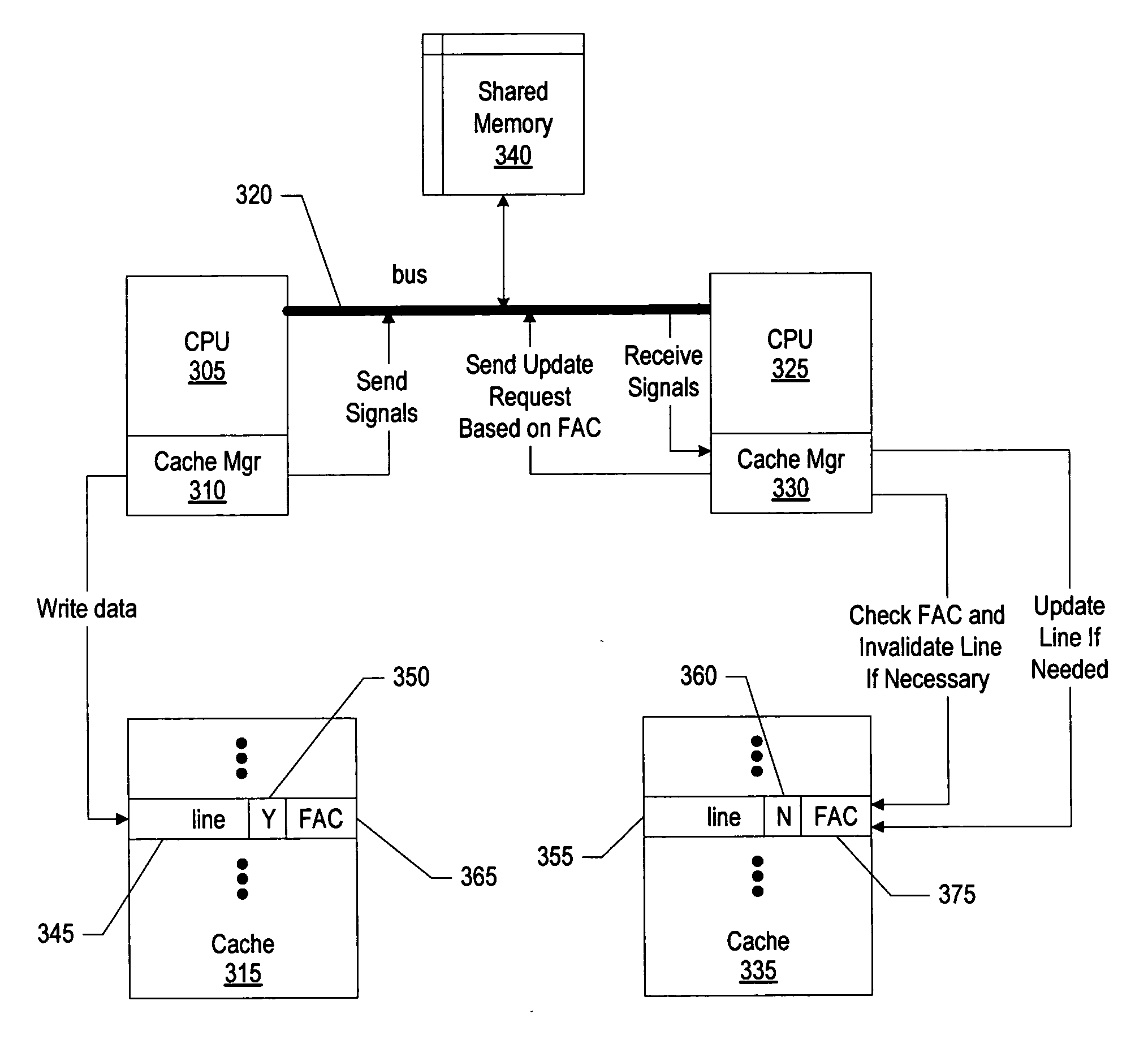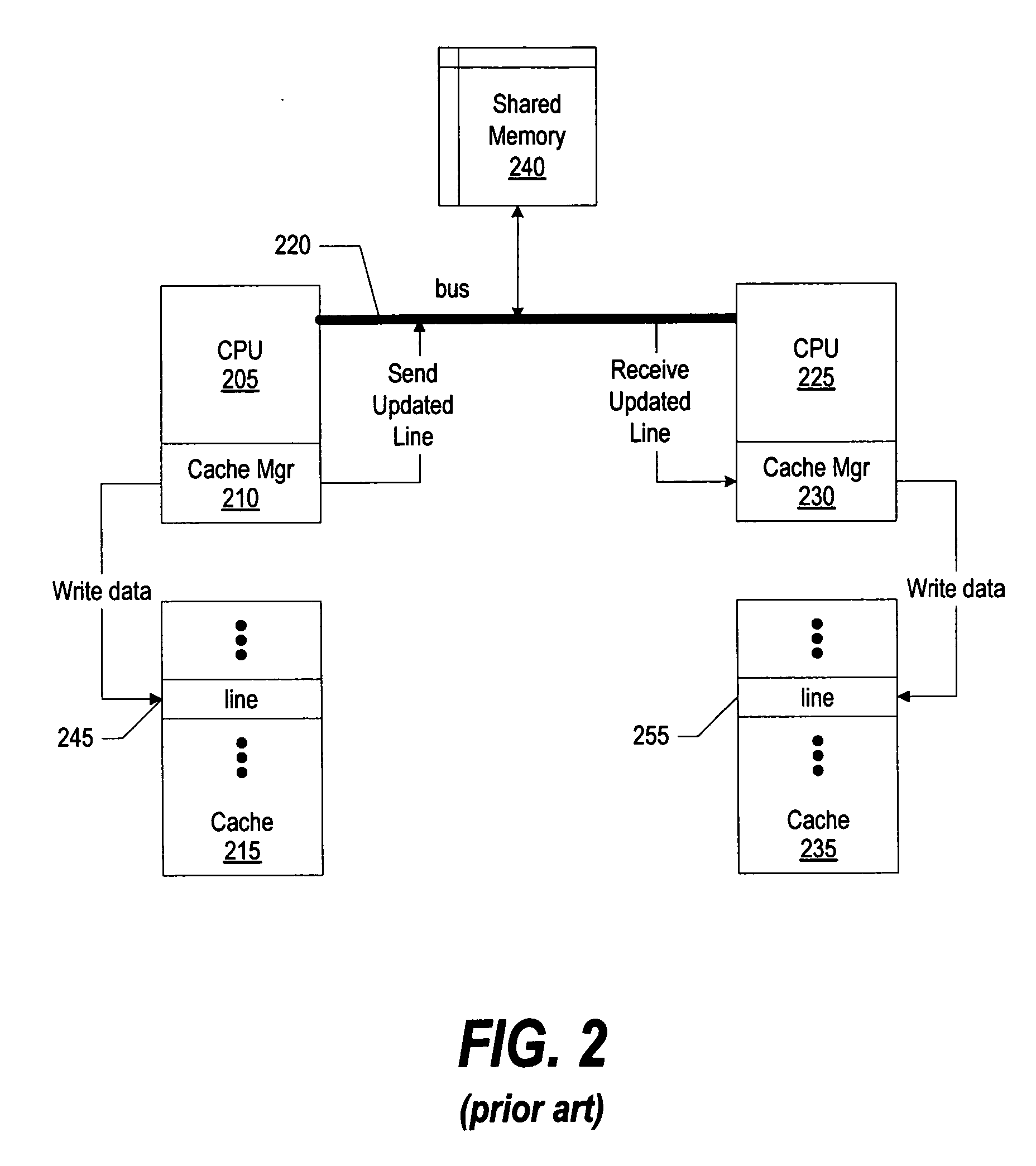System and method for memory coherence protocol enhancement using cache line access frequencies
a memory coherence protocol and access frequency technology, applied in the field of memory coherence protocol enhancement using cache line access frequency, can solve the problems of cache line simply invalidation in the cpu, cache misses may occur to the private cache, etc., and achieve the effect of reducing cache misses and increasing efficiency
- Summary
- Abstract
- Description
- Claims
- Application Information
AI Technical Summary
Benefits of technology
Problems solved by technology
Method used
Image
Examples
Embodiment Construction
[0023] The following is intended to provide a detailed description of an example of the invention and should not be taken to be limiting of the invention itself. Rather, any number of variations may fall within the scope of the invention, which is defined in the claims following the description.
[0024]FIGS. 1 and 2 illustrate prior art memory coherence protocols and are discussed in the Background of the Invention section above.
[0025]FIG. 3 is a block diagram that depicts a memory coherence protocol using cache line access frequencies. CPU 305 includes cache manager 310 for controlling access to cache 315. Cache 315 is a private cache used by CPU 305. Similarly, CPU 325 includes cache manager 330 for controlling access to cache 335. Cache 335 is a private cache associated with CPU 325. Cache 315 and cache 335 are kept coherent with each other through the use of frequency access counts, which are used to dynamically switch from an invalidation protocol to an update protocol, as desc...
PUM
 Login to View More
Login to View More Abstract
Description
Claims
Application Information
 Login to View More
Login to View More - R&D
- Intellectual Property
- Life Sciences
- Materials
- Tech Scout
- Unparalleled Data Quality
- Higher Quality Content
- 60% Fewer Hallucinations
Browse by: Latest US Patents, China's latest patents, Technical Efficacy Thesaurus, Application Domain, Technology Topic, Popular Technical Reports.
© 2025 PatSnap. All rights reserved.Legal|Privacy policy|Modern Slavery Act Transparency Statement|Sitemap|About US| Contact US: help@patsnap.com



